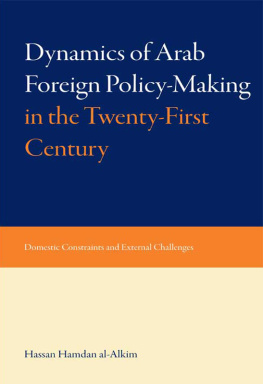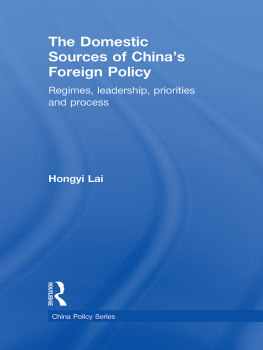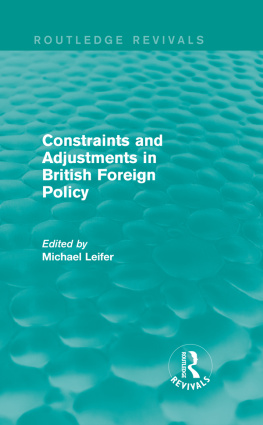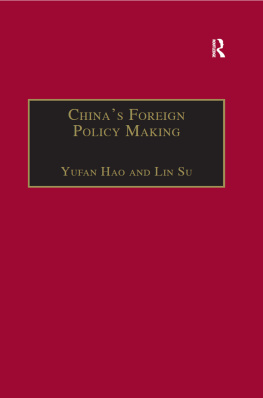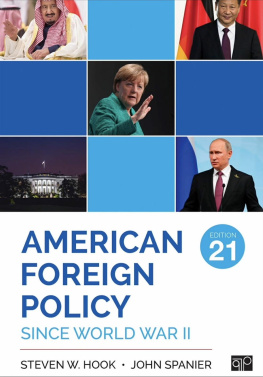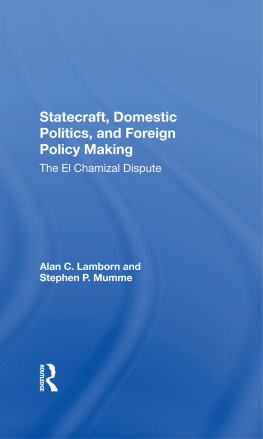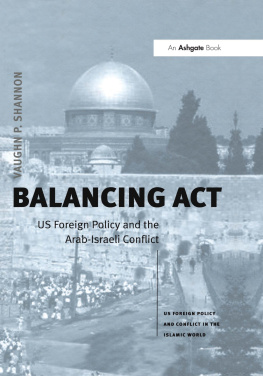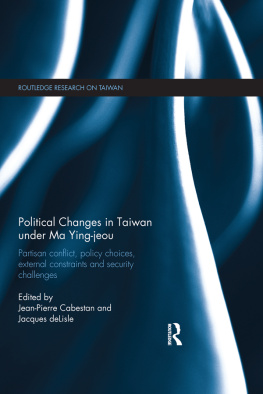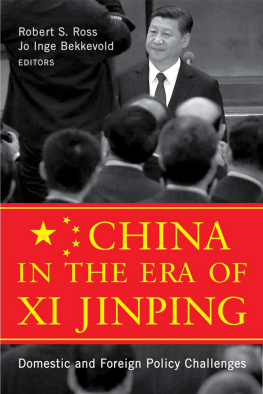Hassan Hamdan al-Alkim
Dynamics of Arab Foreign Policy-Making in the Twenty-First Century
Domestic Constraints and External Challenges
SAQI
eISBN: 978-0-86356-808-4
First published by Saqi Books, 2011
This eBook edition published 2012
Hassan Hamdan al-Alkim 2011 and 2012
All rights reserved. No part of this book may be reproduced or transmitted in any form or by any means, electronic or mechanical, including photocopying, recording or by any information storage and retrieval system, without permission in writing from the publisher.
This book is sold subject to the condition that it shall not, by way of trade or otherwise, be lent, re-sold, hired out, or otherwise circulated without the publishers prior consent in any form of binding or cover other than that in which it is published and without a similar condition including this condition being imposed on the subsequent purchaser.
A full CIP record for this book is available from the British Library.
A full CIP record for this book is available from the Library of Congress.
SAQI
26 Westbourne Grove, London W2 5RH, UK
www.saqibooks.com
To all those who still
Have faith in Arab unity,
To all those who still
Believe in Arab destiny,
To all those who believe
In the freedom of expression,
To all those who still believe
That there is a light at the end of the tunnel,
To all those who are
In search of truth and objectivity.
Contents
List of Tables
List of Figures
See seperate section
| Foreign Policy-Making Process |
| Women Empowerment |
| Arab Countries Main Trade Partners (Imports 2007) |
| Arab Countries Main Trade Partners (Exports 2007) |
| Development of Arab Crude Oil Production (20032007) |
| US Military Spending vs the World in 2008 |
| Fish Production in the Arab World (20002007) |
| Arab Food Production (20002007) |
| Arab Food Gap Cost (20002006) |
| Arab Agricultural Imports and Exports (20002006) |
| The Structure of the Arab Imports of the Main Food Commodities in 2006 |
List of Maps
See seperate section
| SaudiYemeni Border Agreement |
| Conflicting Water Projects in the Jordan Basin |
| Sources of Euphrates and Tigris Rivers |
Abbreviations
AKP Justice and Development Party
GCC Gulf Cooperation Countries
GDP Gross Domestic Product
GNP Gross National Product
HDI Human Development Index
IAEA International Atomic Energy Agency
IMF International Monetary Fund
IPCC Intergovernmental Panel for Climate Change
KGK Peoples Congress of Kurdistan
KUNA Kuwait News Agency
LEU Low-Enriched Uranium
mbd Million Barrels per Day
mcm Million Cubic Metres
MDG Millennium Development Goals
NGO Non-Governmental Organizations
NPT Non-Proliferation Treaty
OAPEC Organization for Arab Oil Exporting Countries
OPEC Organization for Oil Exporting Countries
OPT Occupied Palestinian Territory
PKK Kurdistan Workers Party
PLO Palestinian Liberation Organization
UAE United Arab Emirates
UNDP United Nations Development Project
UNRWA The United Nations Relief and Works Agency
WMD Weapons of Mass Destruction
Prelude
Scholars and analysts of foreign policy studies agree that foreign policy is the by-product or outcome of interactions between external and internal factors aimed at maintaining or changing the status quo. They argue that foreign policy undertakings are shaped by human and non-human factors. Foreign policy study cannot be reduced to testing generalizations that treat societies as agents subject to stimuli that produce external responses.
The Arab world constitutes twenty-two independent countries with a total population of approximately 335 million people, stretching over 14 million square kilometres. The Arab worlds considerable material and human potential, and its strategic location, should allow it to play a major role in world affairs. The Arab states share culture, language, history and geographic proximity and face common external threats. Yet the majority are still characterized by authoritarian regimes, social injustice, economic underdevelopment and military weakness. They suffer common characteristics such as political repression, corruption, identity crisis, ethnic and social cleavages, and dependency on the outside for security. Such factors inspired the Tunisian and Egyptian revolutions and the uprisings in Yemen, Libya, Jordan, Bahrain and Syria.
This work takes a social science approach to the investigation of the dynamics of Arab states foreign policy-making. It is an attempt to understand the evolution of Arab politics in the troubled contemporary world. It sets out a paradigm or a road map that will help decision-makers, scholars, researchers, and students of Middle Eastern politics to understand Arab politics. The purpose of the study is as much to stimulate discussion as to present an overall indigenous cultural interpretation. Earlier versions of some of the chapters have been published in reviewed academic journals in both Arabic and English. The present work does not try to examine all variables involved, problems faced or factors determining Arab states foreign policy undertakings. Nor does it claim to be the only comprehensive work on Arab politics since no paradigm is eternally valid. It is no more than another mile-stone added to the previous extensive and significant works by both Arab and non-Arab scholars on the road to understand contemporary Arab politics.
The main objective of this book is to examine the different, external and internal, variables shaping the Arab states foreign policy undertakings in the
The works key assumption is that, despite the Arabs contribution to raising the strong winds of change that have swept the international world order, they themselves, until recently, have only reaped the storm. It relies on analyses and deduction, seeking to stay neutral throughout the process and arrive at objective and scientific conclusions, while also raising the level of scientific research in the Arab world. It relies on primary and secondary sources. Although the difficulties faced by the author are not unique but are those any Arab researcher faces in general, they are still worth mentioning. They include a shortage of information due to the lack of transparency in the Arab world, excessive political and social hypocrisy in Arabic reporting, and most foreign sources lacking the indigenous cultural paradigm. Moreover, the author encountered, on the one hand, the hegemony of Western colonial culture and, on the other, Arab intellectual bias and division coupled with an absence of a culture of tolerance, which in turn has led to more social division and infighting.

